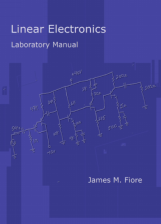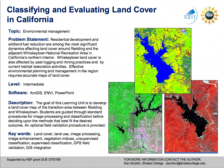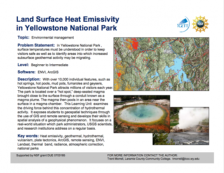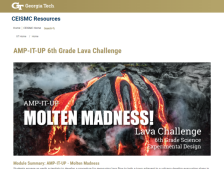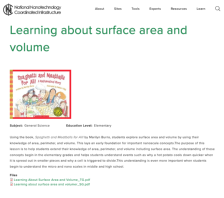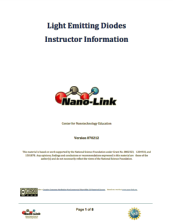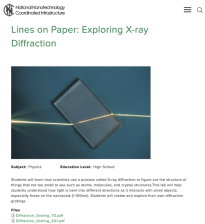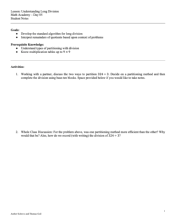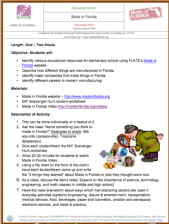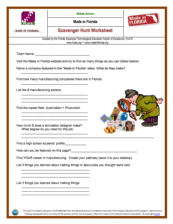Browse Resources
Instructional Material -- Student Guide
Resources |
|---|
This 102-page laboratory manual was written by James M. Fiore and is intended for use in a linear semiconductor devices course and two and four year electrical engineering curriculums. The manual contains an introduction, a table of contents, and sixteen exercises. Each exercise includes an...
Learning Unit Description:
The Integrated Geospatial Education and Technology Training Project (iGETT) presents a series of Learning Units (LU) designed to incorporate federal land remote sensing data into Geographic Information Systems (GIS) instruction. The Classifying and Evaluating Land Cover...
Learning Unit Description:
The Integrated Geospatial Education and Technology Training Project (iGETT) presents a series of Learning Units (LU) designed to incorporate federal land remote sensing data into Geographic Information System (GIS) instruction. The Land Surface Heat Emissivity in...
This resource, published by Georgia Tech Research Institute, features an earth science activity designed for sixth graders. In this activity, students develop a procedure using a scale model with dish soap to determine how long it takes lava to flow, then draft recommendations for the evacuation of...
This lesson, presented by the National Nanotechnology Coordinated Infrastructure, covers the general concepts of area, perimeter, and volume to include surface area. Early exposure to the concepts of geometry, and broad concepts related to the elementary ideas of nanotechnology, are introduced to...
This module, created by the Center for Nanotechnology Education (Nano-Link), introduces students to "the phenomenon of band gaps in light emitting diodes using readily accessible experimental materials, LEDs, and inexpensive digital meters." During the learning activity students build a simple Light...
This lab, presented by the National Nanotechnology Coordinated Infrastructure, allows students to "understand how light is bent into different directions as it interacts with small objects, especially those on the nanoscale (1-100nm)." Additionally, students will learn about the process of x-ray...
This lesson plan, from the Contextualize to Learn project at the University of Wisconsin-Madison, provides an opportunity for students to further explore division through the standard algorithm. In this lesson, students will work in pairs to contextualize and apply division to problems. Included in...
This activity, from the Florida Advanced Technological Education Center, is targeted towards students in elementary school, and challenges them to think of products (either manufactured or natural) that originate from Florida. Students begin by watching a 27-minute video ("Made in Florida") and...
This activity, from the Florida Advanced Technological Education Center, is targeted towards students in middle school and high school, and challenges them to think of products (either manufactured or occurring naturally) that originate from Florida. Students begin by watching a 27-minute video...
|
| ← PreviousNext → |
